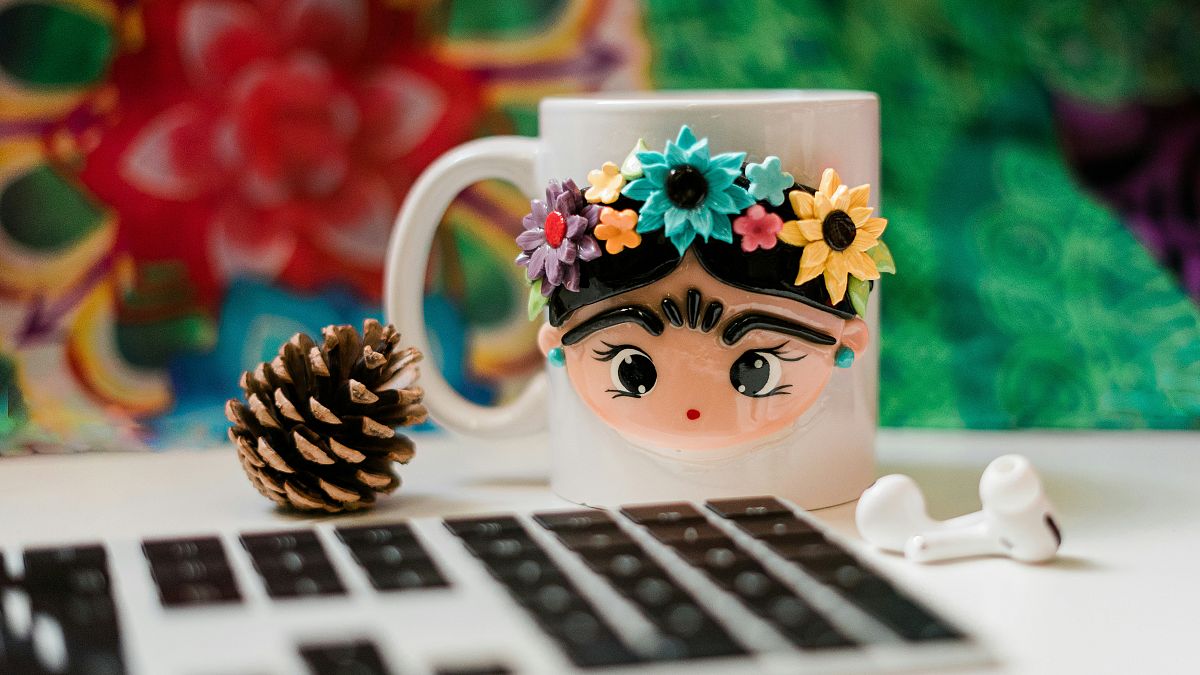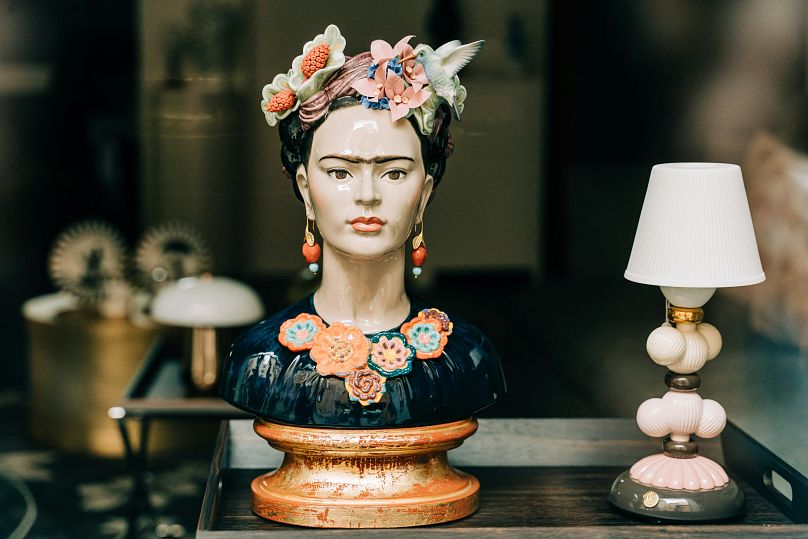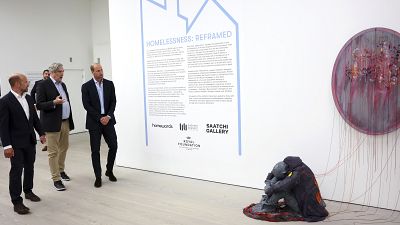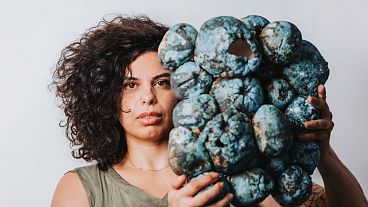Stylised and simplified, Kahlo’s likeness can now be found on t-shirts, tote bags, eye masks, phone cases, oven mitts and plant pots.
This year marks the 70th anniversary of Frida Kahlo’s death. The defiant, boundary-breaking artist inspired generations of creatives and propelled Mexican art into the spotlight.
But sometimes it seems like her greatest legacy is the merchantability of her face - and those eyebrows.
Stylised and simplified, Kahlo’s likeness can now be found on t-shirts, tote bags, eye masks, phone cases, oven mitts and plant pots.
So what is it that has made her appearance so marketable?
What is Fridamania?
It is not uncommon to find an artist’s self-portrait printed onto an item of clothing, bag or accessory. But with Kahlo, it is not just her psychologically profound autobiographical depictions that decorate gifts and gadgets.
Red lips, black eyes, a monobrow and dark hair studded with flowers and you know instantly it is Kahlo - even in minimalist style. As early as the 1970s, her image was being plastered across billboards and assimilated into fashion design.
Now, beyond Etsy artisans, corporations like Forever 21, Barbie-creator Mattel and Vans have merchandise with her face.
This conflation of her artwork and her real appearance has transformed her into an image of cult-like status. Certainly, her bold, bohemian look of eye-popping colours and floral arrangements lends itself to becoming an eye-catching and reproducible motif.
Her bushy eyebrows and stark, unforgiving representations of herself also chime with current rejections of artificial and conformist beauty standards. To have Kahlo’s face on your tote bag implies you support the non-shaved, all-natural beauty values.
Or perhaps you see her as the figurehead for misfits.
“I used to think I was the strangest person in the world,” she supposedly said. “Read this and know that, yes, it’s true, I’m here, and I’m just as strange as you.”
Frida Kahlo as a cult figure
For the cognoscenti of her life, the choice to wear the artist’s face also suggests support for a figure who is iconic as a standard bearer for women’s courage and bravery in the face of adversity.
At the age of 18, Kahlo experienced a life-changing accident. “She was riding a bus in Mexico City when it was struck by a trolley car. A metal handrail pierced her abdomen; her spinal column was broken in three places. No one thought she would live, nor walk again,” biographer Stephanie Mencimer describes.
But Kahlo didn’t let it stop her from starting to paint, even when encased in a full-body plaster cast.
The life that followed was a series of tragic and traumatic experiences including marital affairs, divorce, and debilitating health conditions.
It has made Kahlo appear as the archetypal troubled, suffering artist and mythologised her into a cult heroine figure.
Some academics like Margaret A. Lindauer have argued that this has distorted the appreciation of her art where there is a “one-to-one association of life events to the meaning of a painting.”
But for her image, it has meant it has become all the more iconic and mass marketable, accruing all kinds of symbolic meaning from emancipation of gender roles to facial hair ambassador.
That said, the commercialisation of her image that now appears on seemingly any kind of mass-produced good has divorced it from its deeper meanings so it exists solely as a stylish and stylised symbol of cool.
As the authors behind the website Messy Nessy see it, she has become “a cookie-cutter-mould of her former self, all the while making a profit for the kind of capitalist corporations in ways that the artist wouldn’t have wanted.”
















